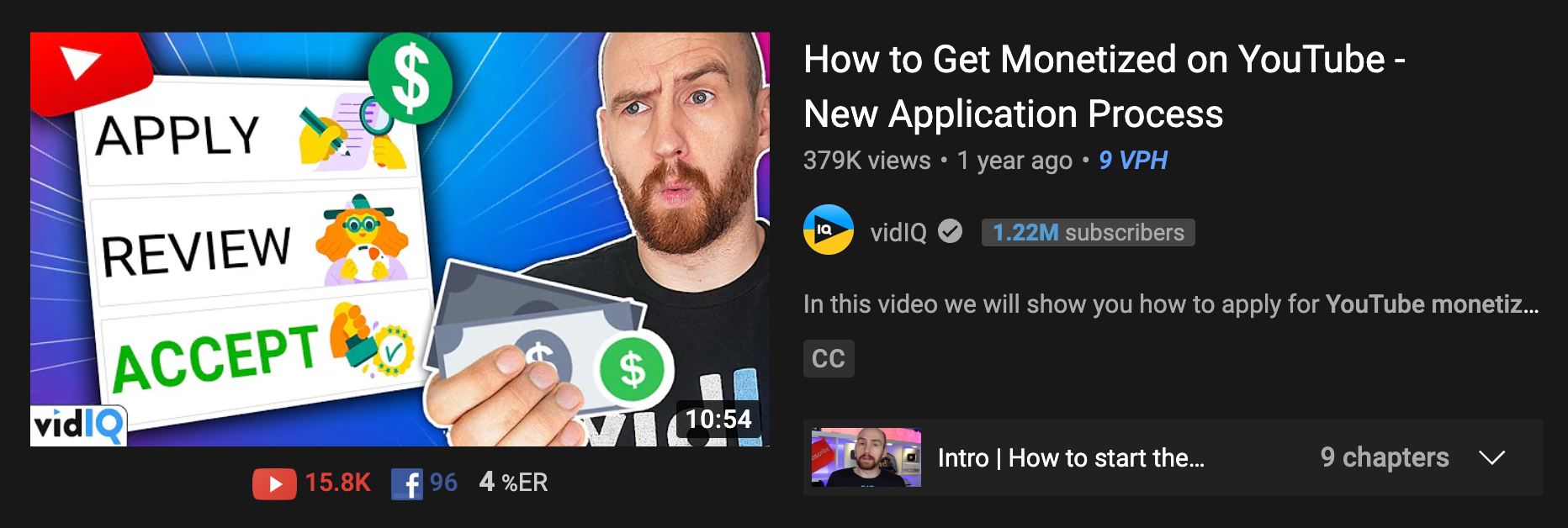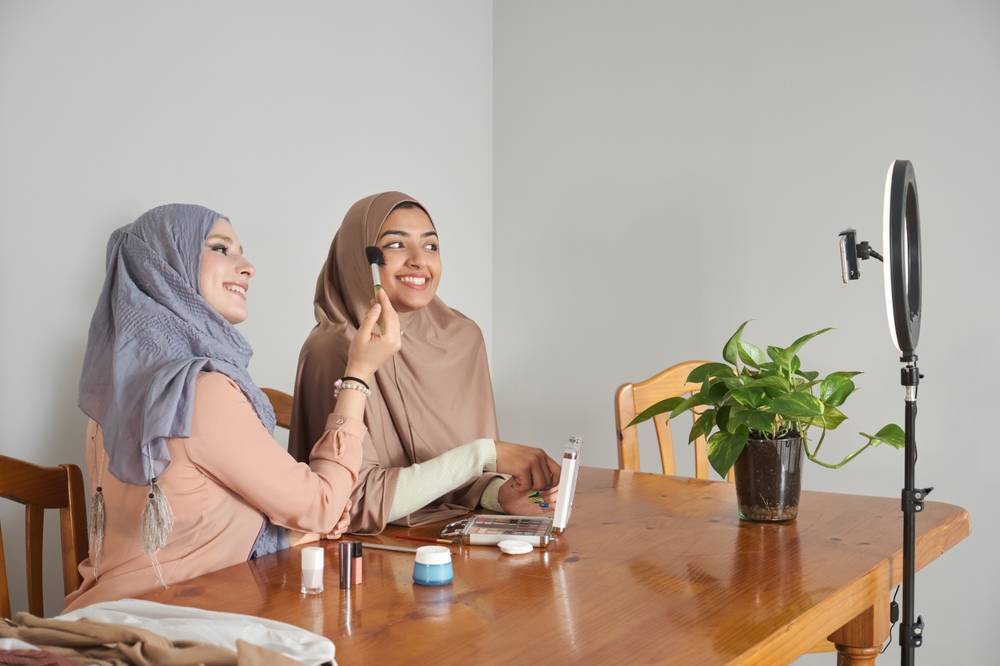Lydia Sweatt is a writer, bookworm, and bass guitar enthusiast. When she goes outside, a bicycle goes with her.
12 YouTube Myths that Distract You from Getting More Views

There are plenty of myths about YouTube, especially those that have to do with growing a channel. Some people believe they need expensive equipment to start recording videos. Others think it’s impossible to make money with a small YouTube channel.
Dan, our in-house YouTube connoisseur, recently posted a video about YouTube myths. He talked about why they don’t serve your channel and the correct way to make videos in 2024.
If you haven’t seen it yet, it’s definitely worth a watch:
But if you’re short on time (or just really into skim-reading), here are 12 things you shouldn’t believe about YouTube.
1. Longer YouTube Videos Rank Higher than Shorter Ones
This is one of the oldest myths about YouTube. But no matter how believable it is, the facts remain — longer videos aren’t the bridge to more views or higher rankings.
The truth is that a one-minute video can be just as viral as a 20-minute video. The most important thing creators need to remember here is to get your point across regardless of how long you think your videos should be.
For example, a meme channel named Beluga is filled with dozens of short videos. By short, we mean only a couple of minutes long! But each one has millions of views because the content is satisfying, binge-worthy, and creates a positive experience for viewers.
2. People Only Click on Thumbnails that Have Text
This a myth, mostly because there’s more than one way to create YouTube thumbnails. Deciding to put text on your graphics (or not) depends on the type of content you’re creating.
If you’re a vlogger, you might not always need thumbnail text. Your videos usually have a loose storyline, and viewers aren’t expecting an exact overview before clicking. They’re coming along for the ride because they like watching you, so an engaging image (without or without text) will do.
On the flip side, a how-to creator should probably use thumbnail text. If a viewer is learning to take photos, invest their money, or something else, a few words can help them notice the best tutorial for that goal.
Here’s a great example from the vidIQ channel. The words “apply,” “accept,” and “review” indicate that you’re about to learn the monetization process on YouTube.

3. YouTube Tags Will Help Your Video Rank Higher
It’s easy to look at tags and subconsciously think of them as keywords. But YouTube has debunked this myth plenty of times. So, now, it’s best to accept that video tags won’t help anyone discover your videos; in fact, they do something else entirely.
“Tags can be useful if the content of your video is commonly misspelled. Otherwise, tags play a minimal role in your video's discovery,” YouTube states on its support page.

4. Using AI Will Ruin Your Channel
If we've learned one thing from last year, it's that AI is here to stay. And this is not new in the content ecosystem anyway. YouTube's AI-powered algorithm has been serving consumers for years now and has gotten eerily good at it. But the skepticism creators may have about using AI is justified, especially since things aren't still set in stone.
Plus, YouTube is releasing AI tools tool help creators edit faster, create green screen backgrounds, and more. So, AI won't exactly ruin your channel. What matters more is how you use the technology.
Read more: Can YouTube Automation Ruin Your Channel?
Many channels have leveraged AI audio for their content. Using these apps can save you loads of time but can also compromise your quality. However, using AI for video is a whole different discussion, with fair use and copyright coming into play. So, be careful and mindful of YouTube's policies.
5. YouTube Has Shadow Banned Your Channel
Whether you’re a small or large creator, making bad videos is part of the journey. It happens when you’re just starting out and trying to learn how YouTube works.
Sometimes, even your most loyal viewers might not be watching your latest uploads, and that can be confusing. Oftentimes, new creators think they've been "shadow-banned" by the platform, and most of the time it is a myth.

Remember the video at the beginning of this post? In it, Dan explains what shadow banning is (and isn't).
"Shadow banning doesn't mean that you're simply recommended less or shown less on YouTube. It means that your videos aren't seen by a single person on YouTube, it will no longer recommend them, and it will be a thing that the platform actively does to your videos," Dan says.
YouTube's complex algorithm considers everything: how many people are being shown your video, how many clicks it's receiving, and the watch time it's earning. So, if the numbers are low, it's usually explained by one of these metrics.
6. You Need Expensive Equipment to Make Viral Videos
This is a myth, especially when it's applied to every YouTube channel. The truth is that most channels can grow with basic smartphone footage. When you’re speaking to an audience that loves technology, that’s when everything changes.
It’s only natural that a cinematographer has crystal-clear footage from a high-end camera. It makes sense that a photographer shoots better photos with advanced technology.

So, rest assured. Unless you’re doing something technical, upgrading your equipment is an option, not a rule.
7. You Must Use Clickbait to Get Views
First, let’s reimagine the word clickbait. Many people think it’s a bad practice, but not all clickbait makes people feel cheated, played, or upset. Just like there’s bad clickbait on YouTube, there’s also “good clickbait” that delivers on the general promise or theme of a video.
Bad clickbait: Promising something that never happens in the video. It essentially lies to the viewer.
Good clickbait: Teasing something that does happen in the video, but with an exciting twist. That could mean reading a title that says "I Robbed a Bank," but the video itself is a robbery-themed challenge with a fake bank and fake props.
8. Posting YouTube Shorts Can Hurt Your Channel
This myth seems logical at first glance. If people came to see long-form videos, why would they suddenly watch your Shorts? And if they do, does it hurt your long-form audience?
Well, we’re happy to reveal that Shorts will not hurt your channel. In fact, they could help you get more views on long-form videos, with the help of related links.
The important thing is to understand what you are actually getting from Shorts. Through YouTube Shorts, your content might reach viewers that it otherwise wouldn't have. They might not turn into dedicated viewers, but more eyeballs can improve your presence on the platform as a whole!
Read more: 4 Tips to Grow Your Channel with YouTube Shorts
9. All YouTube Revenue Comes from Video Views
There are plenty of ways to make money on YouTube, and not all of them have to do with collecting advertising revenue through views.
Other opportunities include:
- Channel Memberships: Selling exclusive content to super fans every month.
- YouTube Premium: Collecting revenue when a YouTube Premium subscriber watches your content.
- Merchandise Shelf: Selling branded merchandise from your channel profile and watch pages.
- Super Chats and Stickers: Collecting money from viewers when you go live.
- Super Thanks: Accepting small “tips” on regular videos.
- Brand deals and sponsorships: Having brands pay you to advertise their services in your content.
- Affiliate revenue: Receiving a sales commission when viewers make a purchase using your affiliate link.
10. Subscriber Count Has a Significant Impact on YouTube Revenue
While some larger channels do make more money, it’s not always because they have more subscribers. What matters most is the topic someone covers on their channel — their YouTube niche.

Just like in the business world, certain industries command more money than others. Those areas tend to be investing, real estate, online marketing, health, insurance, business, and similar industries. Not much is different on YouTube.
If you want to learn more, read this post about YouTube CPM (cost per mille) and how it affects your revenue.
11. Small Channels Can’t Make Money on YouTube
This couldn’t be further from the truth.
Even if you’re not in the YouTube Partner Program, you can start making money right now. You don’t have to wait until you have 1,000 subscribers and 4,000 hours of watch time to qualify. There’s still the option to get brand deals, collect affiliate revenue, sell products outside of YouTube, and more.
You might make more money outside of the Partner Program anyway!
12. To Get on the YouTube Trending List, You Must Post at a Specific Time
This myth is harmful because it focuses on an imaginary concept. Realistically, there’s no set “window of time” where videos start trending. Fortunately, YouTube is savvier than that.
The platform isn't looking at the video content once every 24 hours; it's more like every 15 minutes. So, you could post your video at any point in the day, and if it’s being picked up by a large audience, it could start to trend.
Let your audience be your north star, not the YouTube trending list. That way, you’ll post videos when your subscribers are online and ready to watch videos.
Grow Your Channel by Serving Your Audience
How does it feel to know that one bad video won’t ruin your channel? Or that video length isn’t as critical as you once thought?
Ultimately, viewers just want the content they’re looking for. So, hopefully, you feel lighter after learning 12 myths you don’t need to focus on!
And, here are four mistakes to avoid if you have a small YouTube channel.


